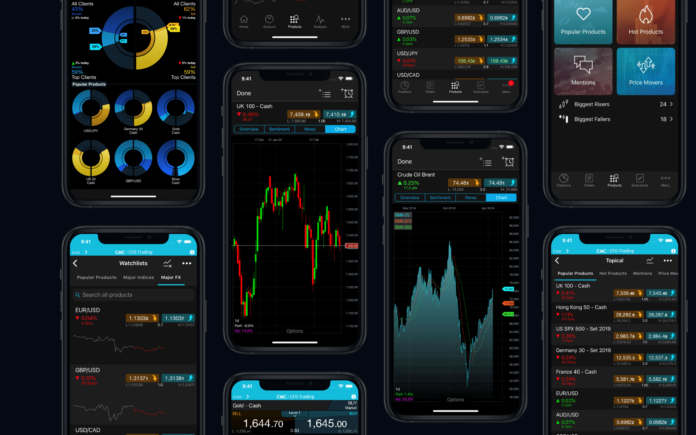
If you’re new to the CFD market, don’t worry, we’ve got you covered. In this beginner’s guide, we’ll walk you through everything you need to know about CFD trading strategies that can help boost your profits.
CFD stands for Contract for Difference, a popular form of derivative trading. Unlike traditional investments, where you buy and own an asset outright, with CFDs, you speculate on the price movements without actually owning the underlying asset. Whether you’re interested in day trading or long-term investing, there are strategies suited to every trader’s goals and risk appetite.
What is CFD Trading?
CFD trading, or Contract for Difference trading, speculates the price movements of various financial instruments without owning the underlying assets. Instead of purchasing stocks, commodities, or currencies outright, traders enter into contracts with their brokers to exchange the difference in value between the opening and closing prices.
One of the key advantages of CFD trading is its flexibility. Traders have access to a wide range of markets, including stocks, indices, commodities, cryptocurrencies, and more. This means that you can diversify your portfolio and take advantage of different market opportunities, all from one platform.
Another benefit is leverage. With CFDs, you only need to deposit a small percentage known as margin to open larger positions. While this can amplify profits if trades go in your favor, it’s important to note that losses can also be magnified.
Additionally, CFD trading allows you to profit from both rising and falling markets. If you believe an asset’s price will increase (go long), you can buy a contract at a lower price and sell it later at a higher price for profit. Conversely, if you think an asset’s price will decrease (go short), you can sell a contract at a higher price and repurchase it later at a lower price.
10 Most Effective CFD Trading Strategies

When it comes to trading CFDs, having a solid strategy is essential. It can help you navigate changing market conditions and increase your chances of making profitable trades. Here are some of the most effective CFD trading strategies that beginner traders can consider.
1. Trend Following Strategy:
This strategy involves identifying and following the prevailing trends in the market. Traders using this approach would buy when an uptrend is confirmed and sell when a downtrend is established.
2. Breakout Strategy:
With this strategy, traders aim to take advantage of price movements that occur after a breakout from a key level or pattern. They would enter positions once the price breaks through resistance or support levels, hoping to ride on the momentum created by such breakouts.
3. Range Trading Strategy:
This strategy involves identifying price ranges within which an asset tends to trade and taking positions accordingly. Traders could buy near support levels and sell near resistance levels, expecting prices to reverse at these points.
4. News-Based Strategy:
Some traders prefer to focus on news events that significantly impact markets’ sentiments and volatility. They can exploit short-term opportunities resulting from market reactions by staying updated with economic releases, geopolitical developments, or company announcements.
5. Momentum Trading Strategy:
Momentum traders look for stocks or assets with strong upward or downward momentum over shorter timeframes like days or weeks. They then seek confirmation signals, such as above-average volume associated with rising prices, before entering a position to validate their observations.
Remember, choosing an appropriate strategy depends on various factors, including personal risk tolerance, financial goals, and trading style. Regardless of your chosen approach, it’s crucial to always analyze each trade carefully before executing it.
6. Risk Disclosure
When engaging in Contract for Difference (CFD) trading, understanding the risks involved is crucial. This form of trading, while potentially profitable, carries significant risks due to its leveraged nature. It’s essential to read and fully comprehend the risk disclosures provided by brokers. These documents outline the specific risks associated with CFD actions, helping you make informed decisions. Remember, the leverage that allows for large profits can also lead to substantial losses, sometimes exceeding the initial investment.
7. Psychological Aspects

Trading is not just about strategies and market analysis; it’s also a psychological challenge. Emotions like fear, greed, and overconfidence can heavily influence decision-making. It’s vital to develop mental discipline and maintain emotional stability to succeed in CFD trading. Strategies such as setting clear goals, sticking to a trading plan, and not letting emotions drive business decisions are key. Developing a balanced mindset helps in managing the psychological stress that comes with the volatile nature of CFD trading.
8. Tax Implications
CFD trading has various tax implications that can vary by jurisdiction. The profits from CFD trading might be subject to capital gains tax or other forms of taxation, depending on where you reside. It’s important to seek advice from a tax professional to fully understand your tax obligations. They can guide on reporting earnings and navigating the complex tax laws related to these activities.
9. Record Keeping
Keeping detailed records of all your trades is essential for several reasons. First, it aids in tax preparation, ensuring that you accurately report your trading income and expenses. Secondly, maintaining a trading journal helps in analyzing your performance over time. This record-keeping can reveal patterns in your overall behavior, allowing you to identify your strengths and weaknesses. By analyzing your past trades, you can make informed adjustments to your strategies, improving your chances of success in future trades.
10. How to Make Money Trading CFDs?
To sum up, trading CFDs can be profitable if approached with the right strategies and mindset. Remember that developing your skills and becoming a successful trader takes time. Patience, discipline, risk management, and continuous learning are key.
There is no magic formula or guaranteed strategy. Trading CFDs, as with any other asset, requires careful market analysis, understanding various financial instruments, and staying updated with economic news and trends.
Here are some general tips to help you on your journey:

- Define your goals, risk tolerance levels, preferred markets or assets to trade in, as well as entry and exit points for trades.
- Begin with a demo account or a smaller position size until you gain confidence in your abilities.
- Use stop-loss orders to limit potential losses and set profit targets for securing gains.
- Regularly follow financial news outlets and keep an eye on economic indicators that could impact the markets you trade in.
- Implement technical analysis tools like trendlines, support/resistance levels, moving averages, etc., along with fundamental analysis techniques to make informed decisions.
- Avoid putting all your eggs in one basket by diversifying across different asset classes and sectors.
- Attend webinars or workshops offered by reputable sources to expand your knowledge of CFD trading strategies.
Remember that success in CFD trading comes from experience gained over time rather than overnight riches promised by questionable schemes or strategies.





![Personal Insolvency: Steps to Rebuild Your Financial Health [UK]](https://www.chartsattack.com/wp-content/uploads/2024/07/Personal-Insolvency-1-218x150.jpg)










